PsychNewsDaily Publishers
100 Summit Drive
Burlington, MA, 01803
Telephone: (320) 349-2484
PsychNewsDaily Publishers
100 Summit Drive
Burlington, MA, 01803
Telephone: (320) 349-2484
Pairing wine with food enhances dining experiences by matching acidity, tannins, and sweetness, considering regional compatibility, and serving at optimal temperatures for flavor enhancement.
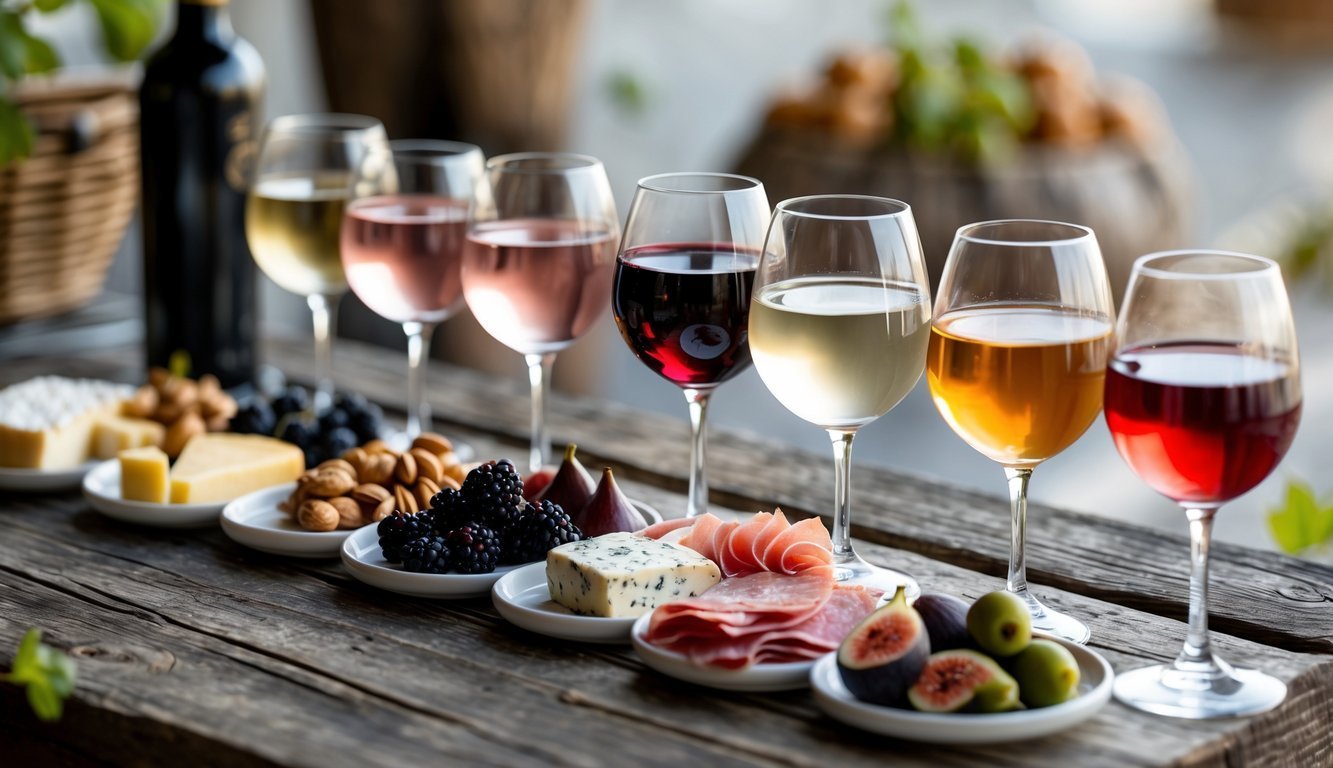
Pairing wine with food can feel tricky, but honestly, it doesn’t have to be confusing or fancy. With just a few simple tips, you’ll boost your confidence and probably impress a few friends at your next meal or get-together.
These 9 pairing tricks help you match wine and food like a pro. You don’t need to memorize a textbook. Small changes can make a huge difference in your wine experience.

Want to look like you know your stuff? Start by matching acidity. High-acid wines, like Sauvignon Blanc, taste bright and crisp.
These wines pair beautifully with oily or fatty foods because their acidity cuts through the richness. Think creamy pasta or grilled salmon. The wine refreshes your palate and keeps the meal from feeling heavy.
If your dish is rich or greasy, grab a wine with good acidity. It’s such a simple trick, but it makes everything taste more balanced.
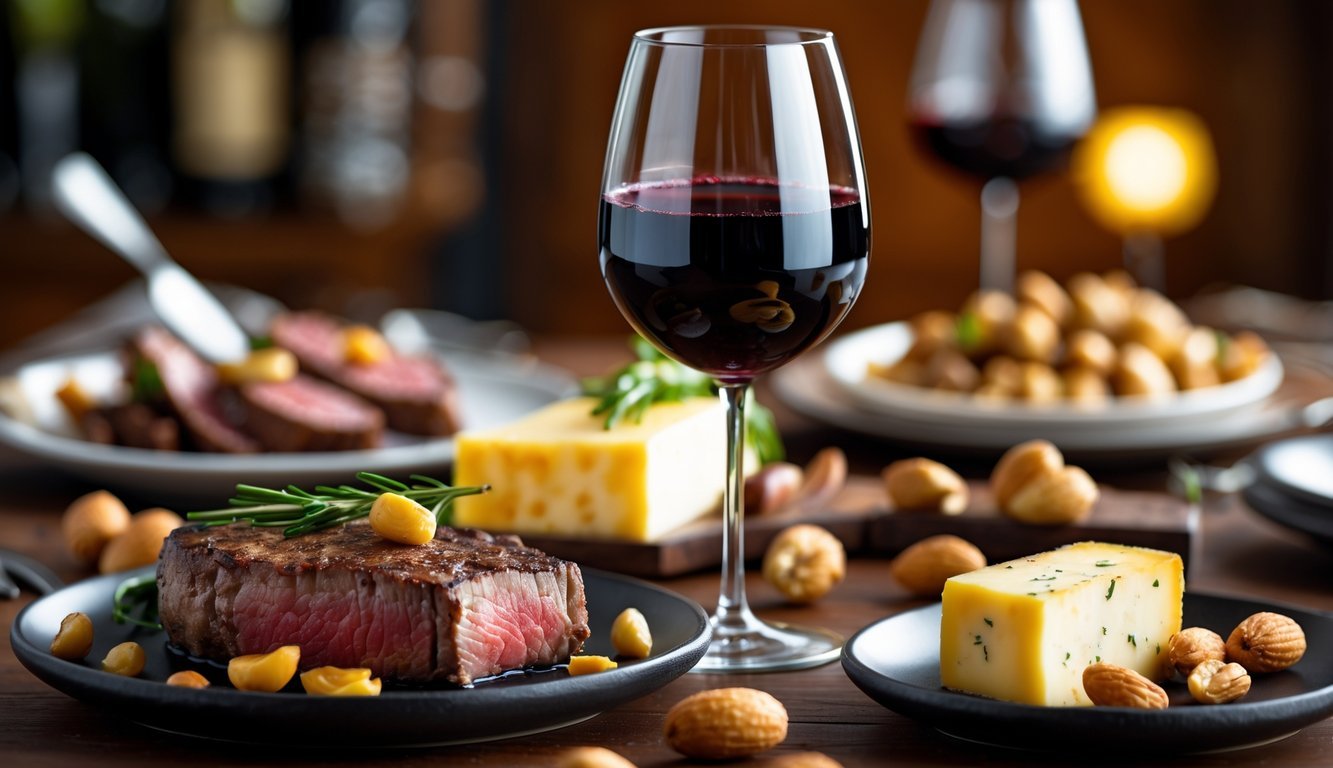
Choose a bold red with high tannins, like Cabernet Sauvignon, and pair it with rich, fatty foods. The fat in meats softens the tannins, making the wine smoother.
Grilled steaks or lamb work perfectly. The protein and fat melt the tannins, so both the food and wine taste better together.
Wines with softer tannins, like Pinot Noir, go better with lighter dishes. But for bold reds, stick with rich meats.
Using tannins this way shows you get how wine and food play off each other. It’s an easy way to impress or just enjoy your own dinner more.
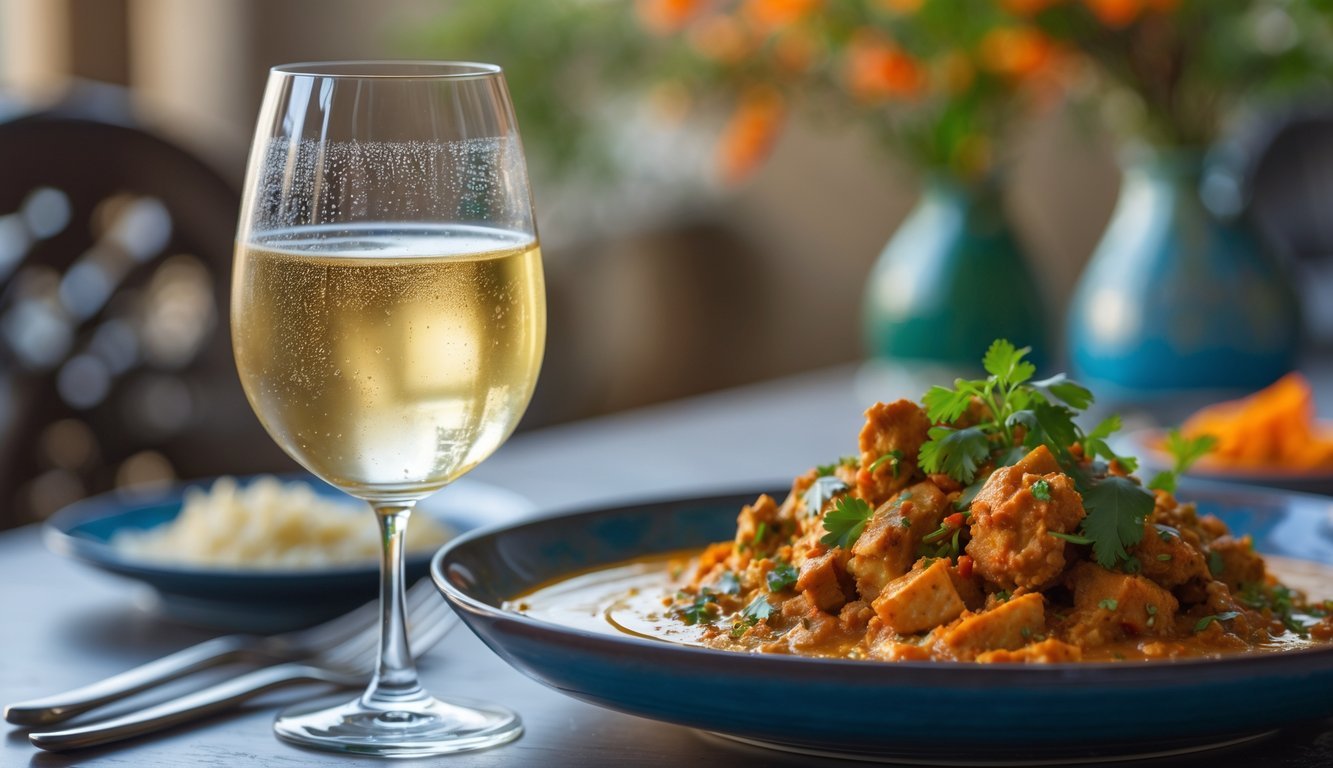
Got spicy food? A touch of sweetness in your wine can really help. Wines like Riesling have just enough sugar to cool down the heat.
This balance lets you enjoy the flavors without burning your mouth. You don’t need a super-sweet wine—just a hint is enough.
Riesling also brings good acidity, so it stays refreshing. It’s awesome with dishes like spicy Thai curry or Szechuan chicken.
Next time you’re eating something spicy, pour a slightly sweet wine. You might be surprised how much better it tastes.

Pairing wine with food from the same region usually just works. Local wines and dishes often share similar ingredients and flavors.
Take Chianti and pasta Bolognese. Both come from Italy, and the wine’s acidity matches the tomato sauce perfectly.
Matching regional food and wine lets you enjoy a balanced meal and a bit of local culture. Try it next time you’re planning dinner—it’s surprisingly effective.

Pouring a young red wine like Malbec and letting it breathe makes a big difference. Air softens those strong tannins that can taste harsh.
Just pour your wine into a glass and wait 30 to 60 minutes. For bolder reds like Cabernet or Syrah, give it even more time.
As the wine opens up, the aromas and flavors come forward. But be careful with older wines—they can lose their character if left out too long.
For young reds, though, a bit of air time really improves the experience.
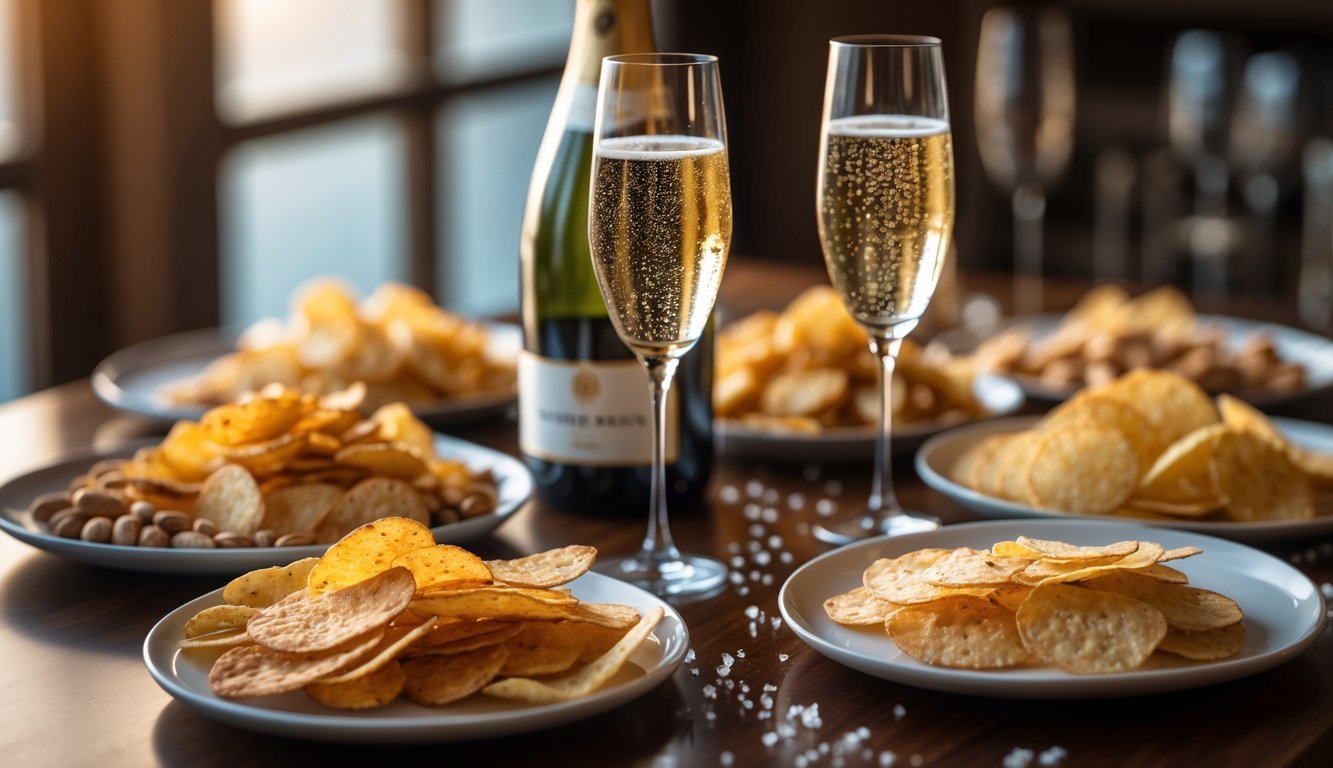
Sparkling wine and crispy, salty appetizers make a fantastic match. The bubbles and acidity cut through the salt and fat, keeping everything fresh.
Snacks like salted nuts, fried calamari, or crispy prosciutto work so well with sparkling wines. The textures play off each other, making every bite and sip feel lively.
This contrast keeps your palate interested and the flavors popping.
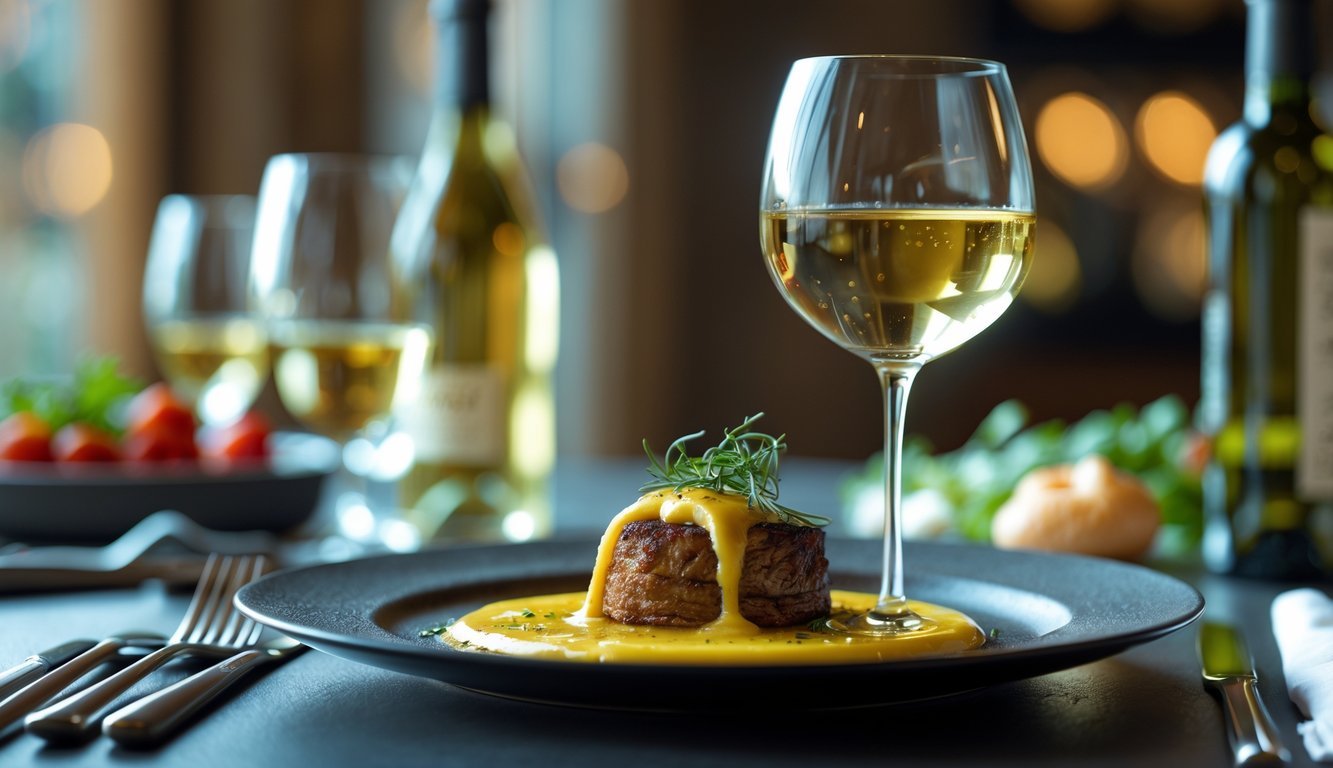
When you pick a wine, focus on the sauce, not just the main protein. Sauces bring strong flavors and textures that really affect the pairing.
Creamy sauces like Alfredo or béchamel love a buttery Chardonnay. The wine’s richness matches the creaminess, making both taste better.
If your sauce is acidic or tangy, like tomato or wine-based, pick a wine with higher acidity. This keeps things balanced and fresh.
The sauce often leads the flavor, so matching it with your wine is a smart move.

Don’t get stuck thinking sweet desserts only go with sweet wines. Try pairing dry red wines with certain sweets.
Tannins and rich flavors in dry reds can balance out desserts like dark chocolate or berry tarts. Sometimes, the unexpected combo is the best one.
Pairing wine and dessert isn’t an exact science. Trust your own taste, have fun, and see what works for you. You might find something amazing.

You can make red wine taste better by serving it a bit cooler than room temperature. Pinot Noir is a great example.
At 55-60°F, the wine feels fresher and the fruity flavors pop out more. If it’s too warm, the wine can taste flat or heavy.
Chilling it slightly also softens strong alcohol notes. Just pop your Pinot Noir in the fridge for a bit before serving, or use a wine cooler.
That way, you get the best out of every glass.
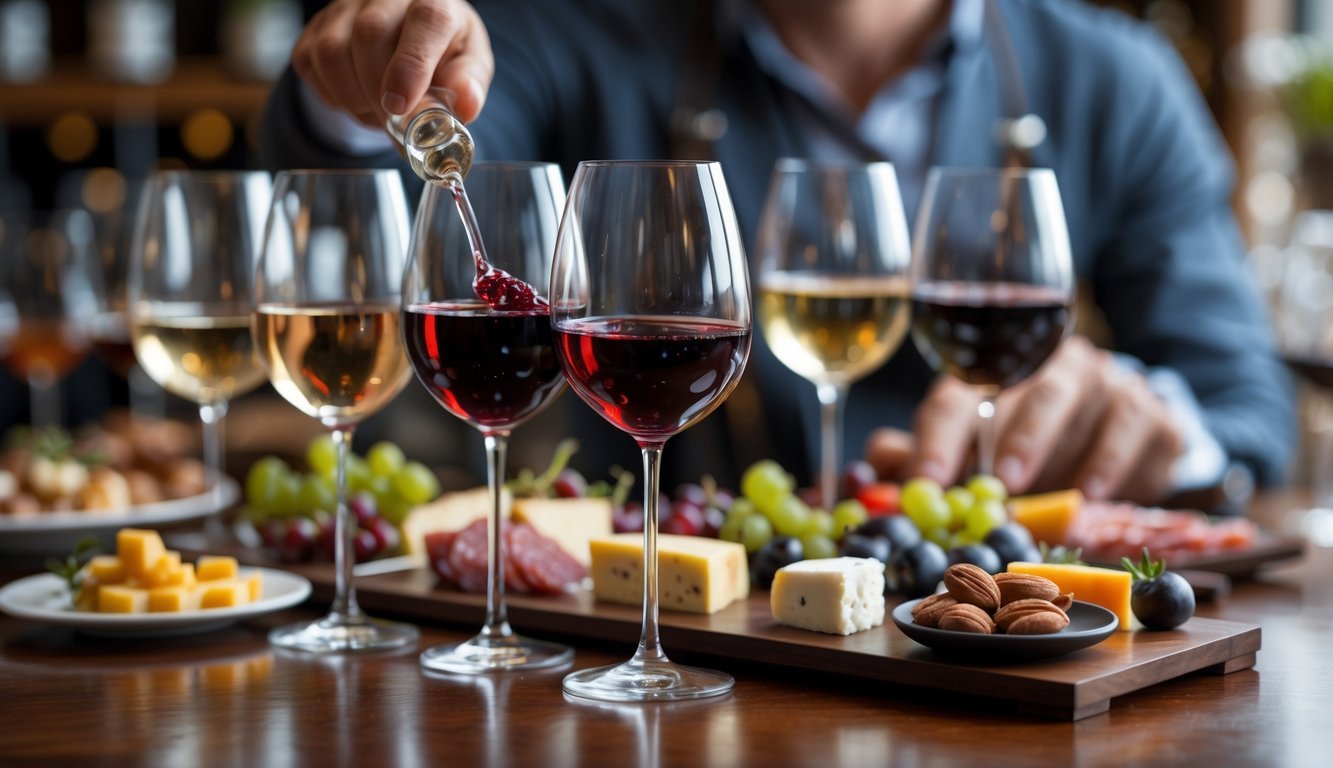
Wine aromas tell you a lot about what’s in your glass. If you learn to spot different smells, you’ll match wine with food more easily and enjoy your drink more.
Wine aromas usually fall into groups like fruit, floral, and herb. A Chardonnay might smell like green apple, while a Syrah brings blackberry.
These basic aroma types help you pick foods with similar scents. For example, Sauvignon Blanc and asparagus both have fresh, green aromas (thanks to something called pyrazines). Pairing them just makes sense.
Here’s a quick list to keep handy:
Matching a wine’s main aroma to your meal’s dominant scent really improves the pairing.
When you smell wine, you’re already prepping your brain for the taste. Swirling your glass helps release more aromas, making them easier to spot.
Tannins, acidity, and sweetness in wine interact with aromas to shape flavor. Tannins can feel dry or bitter, balancing fatty foods like cheese or steak. Acidity keeps wine bright and works well with salty or acidic dishes.
If you pay attention to how a wine’s scent changes with food, you’ll get better at pairing and tasting. Separating what you smell from what you taste can help you enjoy wine more—and pick better matches for your meals.
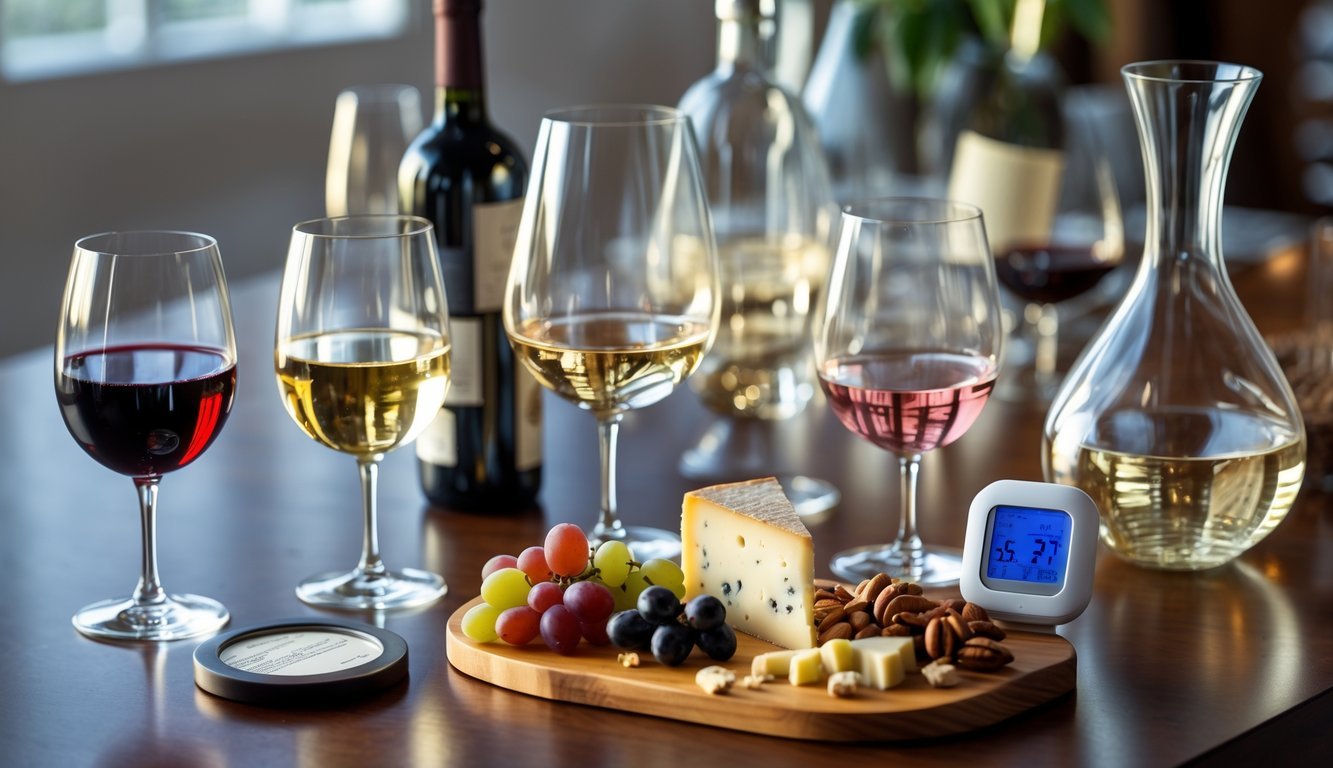
The right glass, proper temperature, and a bit of presentation can totally change how wine tastes. These details show you care about the wine experience.
Use larger, rounder glasses for reds. This lets them breathe and brings out rich aromas.
For lighter whites, go with smaller glasses that have a narrow opening. This keeps the wine cool and focuses the delicate scents.
Don’t use random cups or regular glasses. The shape of the wine glass really affects what you smell and taste.
Here’s a quick guide:
| Wine Type | Glass Shape | Why |
|---|---|---|
| Red (full-bodied) | Large bowl | Opens aromas, softens tannins |
| Red (light) | Medium bowl | Controls intensity |
| White (dry, crisp) | Small bowl, narrow | Keeps cool, highlights acidity |
| Sparkling | Tall flute | Traps bubbles and aromas |
Hold your glass by the stem so you don’t warm the wine with your hand.
Wine really shines at certain temperatures.
Reds usually come alive somewhere between 60-68°F (15-20°C).
If you’re pouring lighter reds like Pinot Noir, keep them a bit cooler—think 55-60°F (13-15°C).
White wines need a chill, but don’t go overboard.
Shoot for 45-55°F (7-13°C).
Too cold, and you’ll miss out on the flavors.
Too warm, and whites can taste a little heavy.
Here are a few quick tips:
Serving wine at the right temperature—and in the right glass—really does make it taste better. It also shows you care, which is never a bad thing.